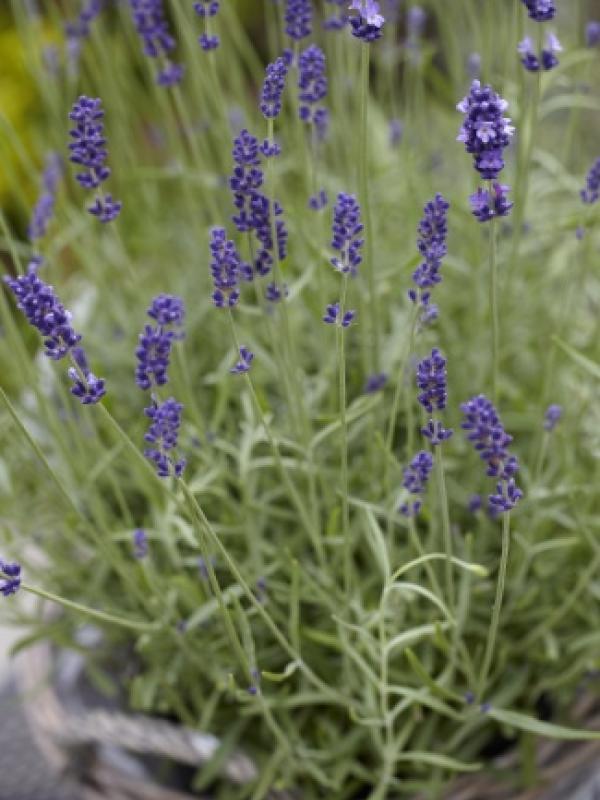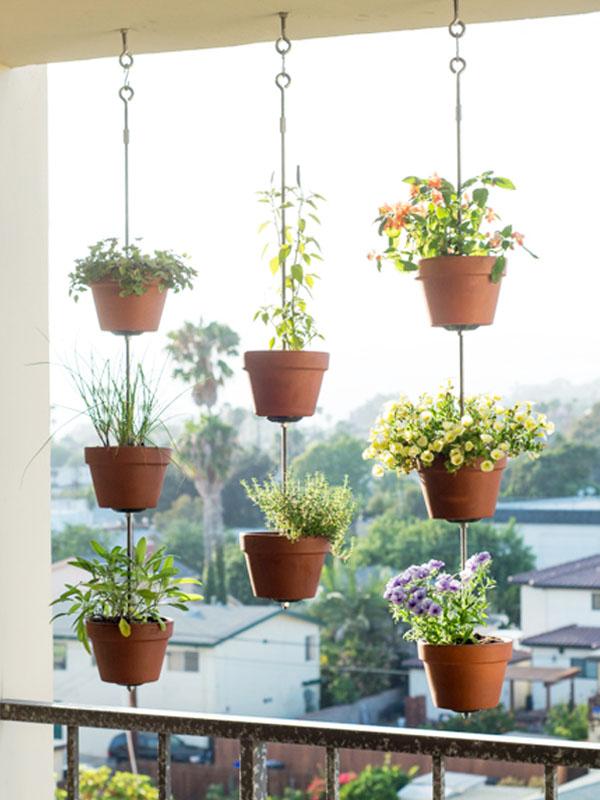1. Suss out your space
Every balcony has its own microclimate – however small it might be. So before you head to the garden centre to stock up on plants, think about its unique conditions and demands, like how much sunlight it gets, whether it’s exposed to winds, or sheltered from the rain, and how much weight it can take. Bear in mind that balcony gardens can be particularly susceptible to the rigours of sun, droughts and winds.
2. Get clued up on containers
From troughs and terracotta pots to hanging baskets, containers are the key to a lush and attractive balcony garden. To safeguard against the drying effects of hot, windy weather (the balcony owner’s scourge), use pots made of non-porous materials, such as plastic, rather than terracotta. But make sure they have drainage holes to ensure roots don’t get waterlogged – and check them periodically to avoid root congestion, repotting as necessary in spring. Heavy containers should be placed close to load-bearing walls or over a load-bearing joist.
3. Water wisely
Many balconies are sheltered from the rain, making their water supply your sole responsibility. Remember to water your pot plants all year round, increasing the frequency to as much as twice a day, if not more, in summer, if necessary. Choose plants that are happy in drought conditions, such as palms and succulents.
 4. Cheat the wind
4. Cheat the wind

If your balcony is exposed to windy conditions, avoid anything tall or too top heavy. Low-growing, ground-cover plants, such as thyme, hostas and alpine plants tend to be the most steadfast in windy weather – although alpines will need covering up in the rainy season if your balcony isn’t sheltered. Plants with needle-like leaves, such as grasses, and those with a fine covering of silvery hair, like lavender are also robust enough to stand up to winds.
5. Create year-round appeal
Perennials will ensure your balcony is full of life year round, even through the gloomy winter months. Introduce some vibrant annuals in the summer to bring a welcome splash of colour when you’re most likely to be spending time outside. Gazania, osteospermum and pelargoniums are pretty and colourful but also tough enough for the job.
6. Make a smooth transition
By placing houseplants inside your home around the entrance to your balcony and mimicking with pots of outdoor plants on the outside, you’ll create a smooth flow between inside and out, which will create the appearance of a bigger space from both perspectives and give your balcony garden an integrated and homely feel. Plants, such as palms, can be replicated indoors and out.
 7. Use space creatively
7. Use space creatively

When space is at a premium, it’s important to make the most of every inch. One way to do this is to use the balcony’s natural features, such as railings and windowsills to display plants at different levels. And where there aren’t features, you can create your own with up-cycled shelving units and occasional tables. You could even try creating your own vertical garden by mounting plants on the walls.












